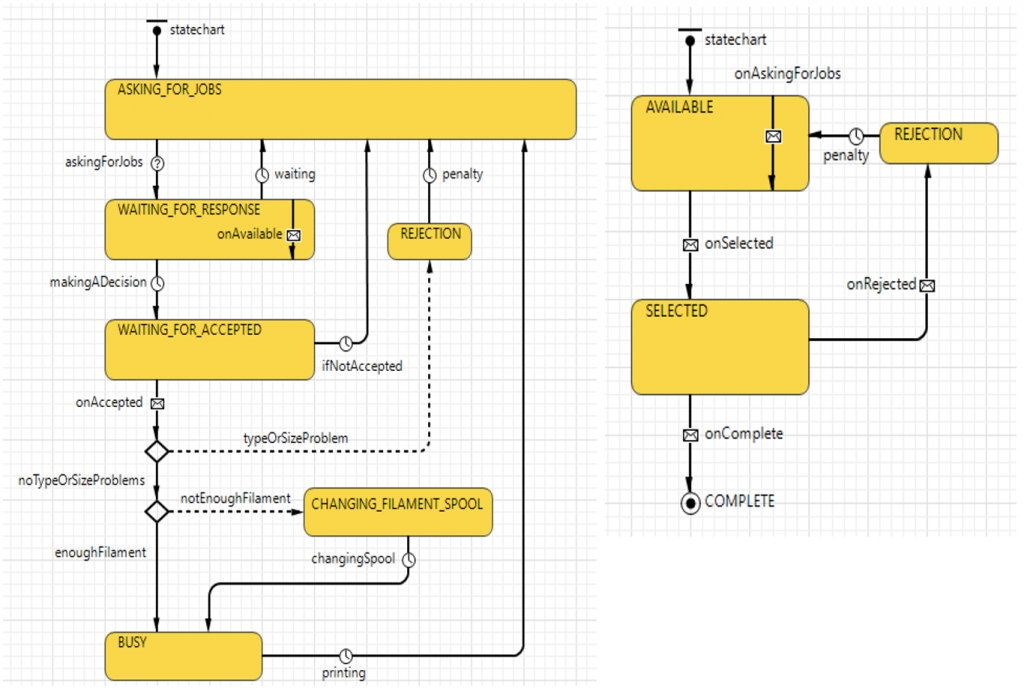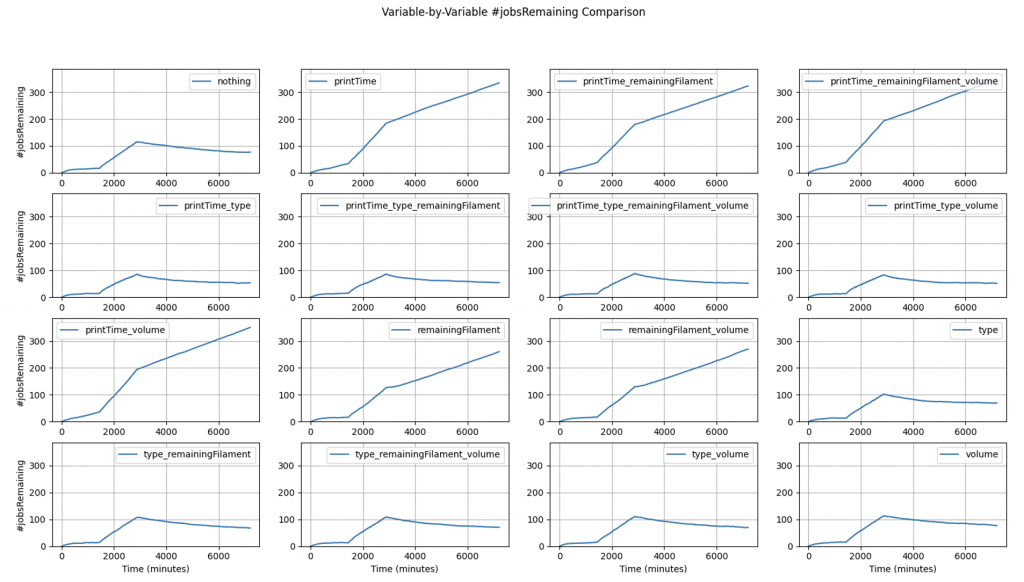Owen Peckham is investigating the Minimum Viable Information requirements to broker deals between jobs and machines, as well as examining the affordances of including additional information during the brokering process.
Over to you Owen.
I am a Research Intern for the summer of 2022 and an undergraduate at the University of Bristol, working towards an MEng in Mechanical and Electrical Engineering. I have just completed my third year of study and am very much looking forward to my fourth. In the DMF lab, I am working on the Brokering Additive Manufacturing (BAM) project, looking at the effects and uses of different levels of information sharing in the network.
The purpose of my BAM research is to develop a picture of the level of information that it the network may require to run optimally, without the risk of intellectual property leakage for those submitting jobs. Since the network is agent based, I am using AnyLogic to create a model of the system in which I can then vary the amount of information shared in the network. The model consists of a population of machines, a population of jobs and a broker.

Figure 1. Anylogic statecharts for the machine and job agents.
Initially the investigation is into the effects of sharing the most basic categories of job characteristics, with the assumption being that the real-world effects on the network will be a sum of the effects of sharing (or not sharing) these basic categories. The basic categories are as follows with some real-world examples:
- Time – continuous, the amount of time required for the job to print
- Type – discrete, whether the job is the same type as the machine – machine type, filament type
- Countdown – continuous, a countdown in each machine that is subtracted from by the jobs – required filament length
- Size – continuous, whether the job fits within the achievable dimensions of the machine – build volume, layer height
Currently the model uses the information in the most basic ways if shared, otherwise the jobs are picked from the queue at random:
- Filtering the type and size to prevent the jobs from being picked then rejected
- Picking the shortest print time jobs
- Squeezing in one more job before the spool needs to be changed
The model is then run for different combinations of category sharing. An example of one of the outputs of the model for one of the metrics used to analyse the network’s performance is shown in Figure 2.

Figure 2. Evaluating the performance of the BAM network with different sharing protocols.
As I move further into the investigation, I will examine the effects of:
- Different methods of utilising the information
- Discretising the continuous categories
- Variation in levels off information sharing between jobs

